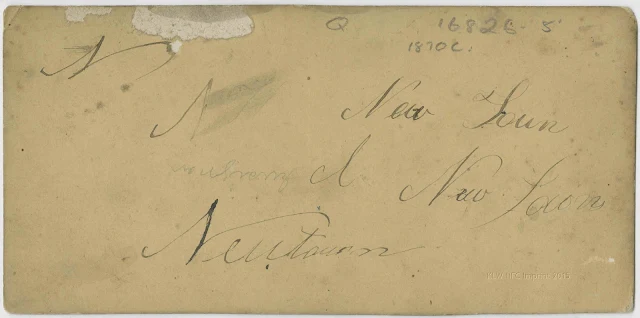What was behind Thomas Nevin's escapade on the evening of December 2nd, 1880?
According to Joan Kerr's definitive entry in the
Dictionary of Australian artists: painters, sketchers, photographers and engravers to 1870 (1992:568), Thomas James Nevin was appointed to the position of keeper of the Hobart Town Hall in January 1876, and "despite a tendency to drink on duty", remained in the position for five years. But on December 3rd, 1880, he was dismissed from the position for being drunk. The previous evening he had been arrested for being
"associated with (or was) a figure in phosphorescent clothing who had been terrorising local residents by appearing late at night as a ghost..."
The charge was dismissed for lack of evidence.
 Entry on T. J. Nevin, G.T. Stilwell and Joan Kerr, p. 568-9:
Kerr, Joan (ed) The Dictionary of Australian artists : painters, sketchers, photographers and engravers to 1870
Melbourne : Oxford University Press, 1992.
Description: xxii, 889 p. : ill., facsims., ports. ; 27 cm
Entry on T. J. Nevin, G.T. Stilwell and Joan Kerr, p. 568-9:
Kerr, Joan (ed) The Dictionary of Australian artists : painters, sketchers, photographers and engravers to 1870
Melbourne : Oxford University Press, 1992.
Description: xxii, 889 p. : ill., facsims., ports. ; 27 cm
Read the
full article here transcribed from the Mercury, December 4th 1880.
During the period when Thomas J. Nevin was most active as a commercial and police photographer (mid 1860s-1880s), the craze for seances, raising the dead and photographing the visits of the dearly departed - usually in the presence of an obliging trance medium - proved a lucrative activity for photographers.
Once having discovered that they could create doubles from positive photographic prints off glass negative plates, they could then "ghost" figures into the image. Phosphorescence was yet another chemical in the cupboard of the spirit photographers, and perhaps Thomas Nevin was out that night to mock a duped public and expose the tricks of the spiritualists.
Hobart photographers of the period may well have taken advantage of a gullible public, but none were as bold as William Mummler in Boston, and Frederick A. Hudson in England. In 1872, spiritualist and medium Georgina Houghton (1814-1884) claimed Hudson had achieved the first successful "spirit" photographs with herself as the subject.
The National Gallery of Australia holds a
"spirit album" containing photos by Hudson of Georgina Houghton, plus the Australian spiritualist William H. Terry (1836-1913). The album contains 36 albumen silver cartes de visite ca. 1871-76 by various photographers, ten of which contain images of "spirits". The provenance was probably via The Josef Lebovic Gallery, originating from a Mosman NSW family with links to the Theosophical Movement.
 Mrs Houghton and Spirit of her Aunt, May 9 1872
Frederick A. Hudson, United Kingdom 1818 - 1889
National Gallery of Australia
Link: https://searchthecollection.nga.gov.au/object/143371
Mrs Houghton and Spirit of her Aunt, May 9 1872
Frederick A. Hudson, United Kingdom 1818 - 1889
National Gallery of Australia
Link: https://searchthecollection.nga.gov.au/object/143371
RELATED POSTS main weblog




